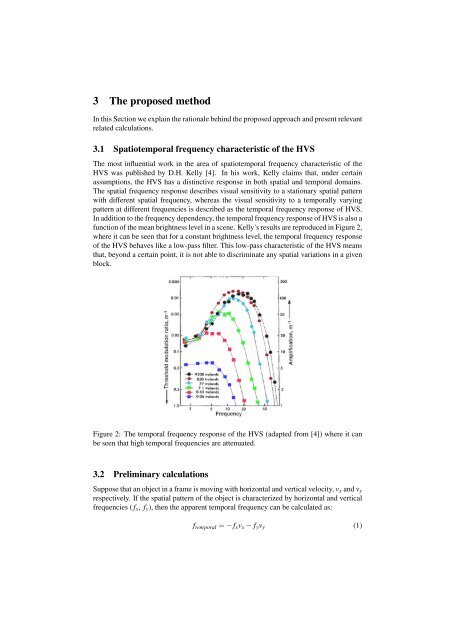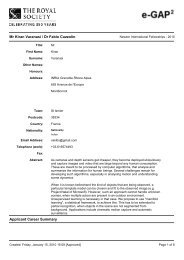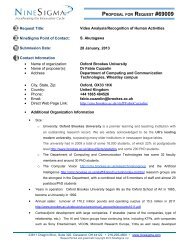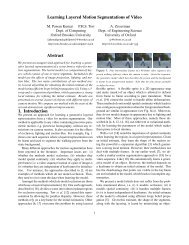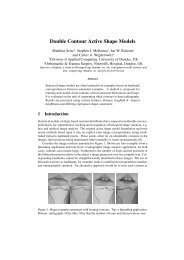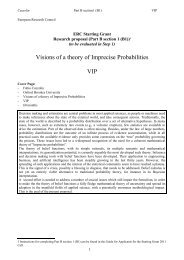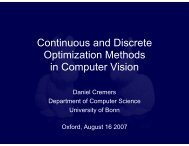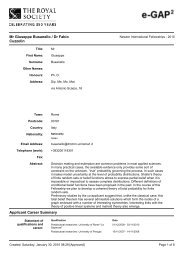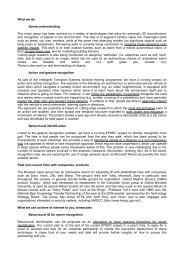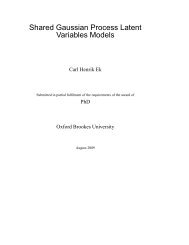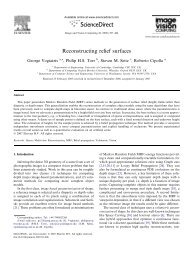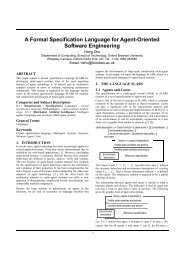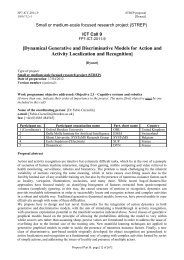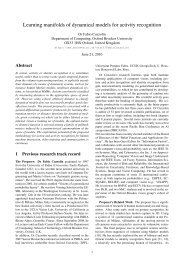Final Copy - Oxford Brookes University
Final Copy - Oxford Brookes University
Final Copy - Oxford Brookes University
You also want an ePaper? Increase the reach of your titles
YUMPU automatically turns print PDFs into web optimized ePapers that Google loves.
3 The proposed method<br />
In this Section we explain the rationale behind the proposed approach and present relevant<br />
related calculations.<br />
3.1 Spatiotemporal frequency characteristic of the HVS<br />
The most influential work in the area of spatiotemporal frequency characteristic of the<br />
HVS was published by D.H. Kelly [4]. In his work, Kelly claims that, under certain<br />
assumptions, the HVS has a distinctive response in both spatial and temporal domains.<br />
The spatial frequency response describes visual sensitivity to a stationary spatial pattern<br />
with different spatial frequency, whereas the visual sensitivity to a temporally varying<br />
pattern at different frequencies is described as the temporal frequency response of HVS.<br />
In addition to the frequency dependency, the temporal frequency response of HVS is also a<br />
function of the mean brightness level in a scene. Kelly’s results are reproduced in Figure 2,<br />
where it can be seen that for a constant brightness level, the temporal frequency response<br />
of the HVS behaves like a low-pass filter. This low-pass characteristic of the HVS means<br />
that, beyond a certain point, it is not able to discriminate any spatial variations in a given<br />
block.<br />
Figure 2: The temporal frequency response of the HVS (adapted from [4]) where it can<br />
be seen that high temporal frequencies are attenuated.<br />
3.2 Preliminary calculations<br />
Suppose that an object in a frame is moving with horizontal and vertical velocity, vx and vy<br />
respectively. If the spatial pattern of the object is characterized by horizontal and vertical<br />
frequencies ( fx, fy), then the apparent temporal frequency can be calculated as:<br />
ftemporal = − fxvx − fyvy<br />
(1)


